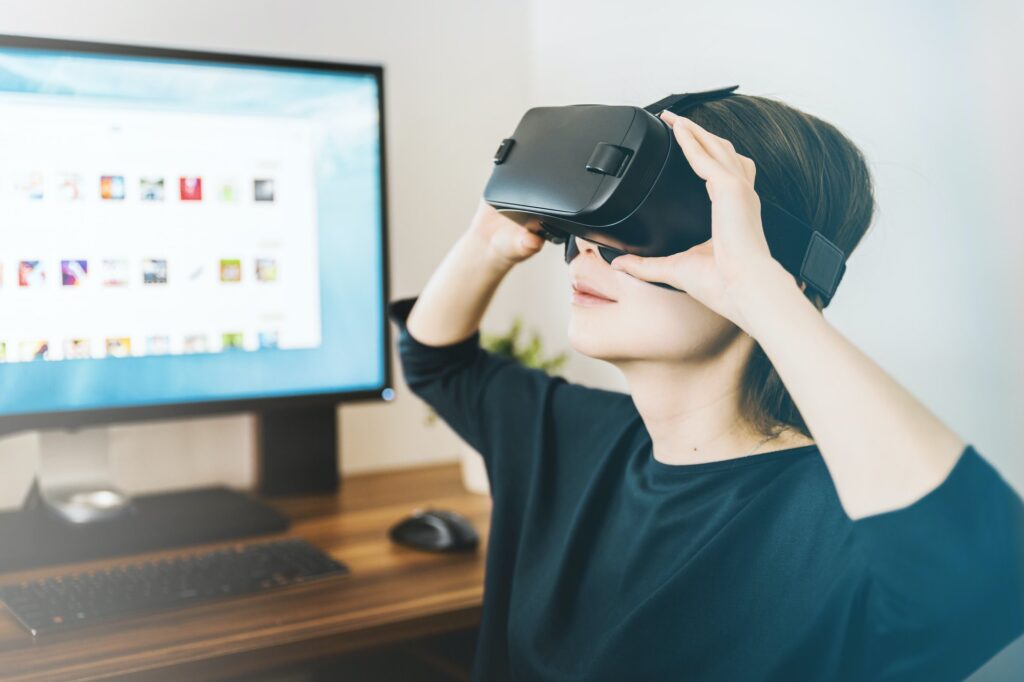Today’s consumers are more sophisticated and knowledgeable about products than ever before. They bring brand knowledge, social responsibility, and a strong desire for excellent customer experiences.
One study indicates that customers receiving a superior customer experience are three times more likely to return to that brand than others. And while trends showed that they prefer human interaction and immediate attention, the technology available through extended reality, such as virtual reality (VR) and augmented reality (AR), can make those human interactions more personal and cement brand loyalty.
Fast Tracking Extended Reality
The technology behind extended reality has been advancing for several years now. Extending technical support through interactive goggles, guided virtual learning, and other applications were already gaining speed. But the pandemic changed the way many businesses look at these technologies.
With the value of virtual experience cemented by distancing and isolation through lockdowns, companies emerging from such restrictions have discovered that extended reality can continue to enhance and extend benefits, broaden service offerings, and improve profit. Instead of customer experience being confined to a human voice or video, VR and AR make it possible to engage customers with interactive applications and hands-on scannable tutorials. They also enable companies to make technical “house calls” to personalize experiences.
5 Ways to Drive Customer Experience With Extended Reality
As the new generation of entrepreneurs continues to innovate and iterate their ideas, here are five ways that extended reality can drive and improve customer experience:
Engagement
To truly utilize extended reality in customer engagement, companies should move past gimmicks or games and pursue ways to include them in the offered mainstream products and services. XR should deliver value to the customer and provide a solution to their problem by giving them a unique look at the product, such as an overlay of color schemes or how the product would look in their own home’s unique space. This reduces the worry of purchasing the wrong thing and engages a customer in a way that generates a faster sale.
Extended Service
Extended reality can be as simple as well-placed QR codes that allow the customer to quickly perform tasks such as cleaning, descaling, replacing filters, or other consumables. Scanning these codes may open a simplified digital product manual or a video tutorial. Once onscreen, live help could be embedded should the consumer need further assistance.
Virtual “Try Before You Buy”
Large purchase items – such as furniture – are hard to try out beforehand. This is also the case for consumables such as cosmetics or hair coloring unique to everyone’s tastes. With extended reality, 3D capture of home space can help buyers “place” the furniture in their own home with a virtual representation and experiment with different colors. Consumer products like makeup or hair coloring can be overlaid to give the buyer a close representation of how different colors look before purchase.
Customer Feedback
Social media has changed the way companies market and assess feedback. But virtual reality allows instant feedback on actual product use. The ability to generate feedback in real-time can be powerful in product development and design as these actual experiences can be captured digitally and incorporated into a custom or future product iteration.
Maintenance and Equipment Service
Field service or maintenance of large ticket items is another useful application for extended reality. Often, the technicians who service these items can be expensive to deploy. With goggles showing overlays and two-way communication of the device needing service, office-based expertise can be spread over more field techs by allowing the experts to “draw” or mark on the field of vision. They can also send specialized service manuals, order parts, and shorten repair downtime because they’re online and share the visual experience with the technician in the field.
From Extended Reality to Business Growth
As extended reality advances, its value to businesses becomes more apparent. Entrepreneurs who adopt these technologies and embed them natively into their products and services will gain an advantage over the competition.
The business and academic staff at the Henry Bernick Entrepreneurship Centre (HBEC) are highly qualified and focused on equipping you with the resources needed to understand these technologies and incorporate them into your business. Contact us today to learn how we can help drive innovation through the adoption and use of extended reality.










